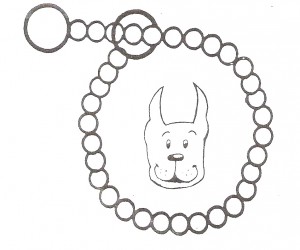EQUIPMENT
The proper tools make any task easier. Dog training is no exception. As your dog trainer and instructor, I will help you select and use equipment that is best suited to your individual needs…
I prefer to start most puppies – those who have not yet learned to pull on the leash – in just a simple buckle collar. Whenever a leash is attached to a buckle collar it should be checked to make sure that it is on snugly enough to ensure that it will not slide over the puppy’s head. This is a safety precaution – because the last thing you want is for your puppy to slip out of his collar and find himself in a dangerous situation. The buckle collar can be loosened when not being used for training, and can be worn as an everyday collar with identification tags.
If your dog has already learned to pull on the leash, there are several collar options – including a slip collar, head halter, or prong collar. It is important that all equipment be appropriate for your dog, fitted properly, and used correctly – to ensure that your training is effective and humane. These types of collars are ONLY for training, and should never be left on the dog when he is unsupervised. Please note that different collars are used for different purposes, and sometimes a change in collar makes all the difference in resolving a particular issue.
As for training leashes… It’s imperative that your leash be non-slip – so that it does not slide out of your hands easily. You can use a leather, cotton, paracord or nylon leash, whichever you prefer. Chain “leashes” are never appropriate for training.
If you are using a slip collar, here’s an illustration that you can use for reference – to make sure that you are putting your collar on properly. This is based on the dog being worked on your left side (which is traditional)…

Copyright © 1986 & 2015 ~ Georgia Alyce O’Boyle, HAVENLEA DOG TRAINING CENTRE



